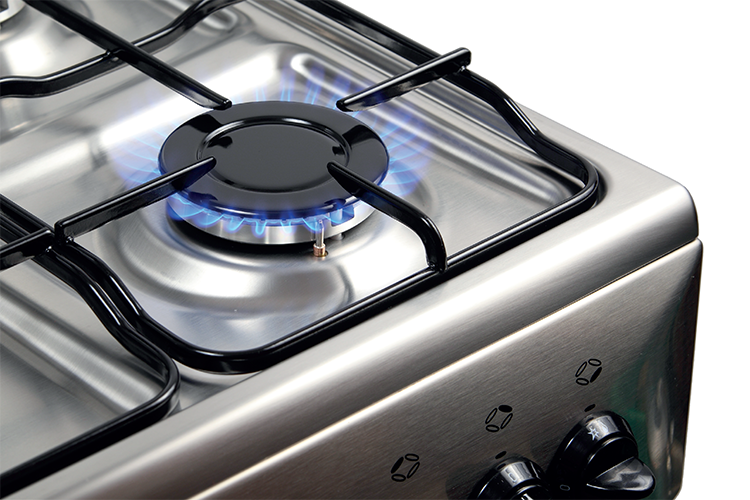
Safety first
Four thousand Americans are hospitalized and 400 killed every year by unintentional carbon monoxide (CO) poisoning not related to fires. Gas appliance and component suppliers operating in North American need to be certain their products are safe and perform to necessary requirements.
Consumer Gas Appliances
Consumers can choose from a wide variety of gas appliances for the domestic setting.
For inside the house, there are gas hobs, heaters, ovens, absorption refrigerators, dryers and water heaters. For outside the home, they may choose a gas-powered grill, stove, firepit or boiling burner.
Personal preference will have a major impact on whether a consumer chooses a gas appliance. For example, many cooks prefer to use gas because it is more responsive and gives a better charring effect on grills. At the same time, what utilities are connected to the property will also have an impact on their decision.
Advantages/Disadvantages
Gas appliances are popular because they have multiple advantages over electric. However, consumers also need to be aware of the potential downsides and the importance of choosing the right product and then maintaining it correctly for safety.
Among the advantages are the fact running costs are often cheaper with gas appliances. In some cases, it is predicted they will reduce utility bills by up to 30 percent. They are also often more energy efficient – for example, gas dryers use 30 percent less energy than an electric equivalent. Finally, they often have a longer lifespan because there are fewer working parts, and they are easier to maintain.
At the same time, consumers will also need to consider the fact that gas appliances are often more expensive than electric and, if gas is not supplied to their home, they will need to pay a connection fee. However, these costs can be negated by a longer lifespan and lower operating costs.
More seriously, poorly maintained or badly built gas appliances can result in gas leaks that can cause fires/explosions. In the US, it is estimated grills start 10,600 house fires and cause 19,700 people to visit the emergency room every year. This has led to a campaign by the National Fire Protection Association on safe grilling.
Carbon Monoxide (CO)
Perhaps the most concerning aspect of gas appliance use is the possibility of unintentional CO poisoning. CO is invisible, silent and odorless, and can kill very quickly. It is produced by the combustion of fuels, such as natural gases, kerosene, oil, coal and wood, meaning badly built or poorly maintained gas heating and cooking appliances can be a source.
Consumers are always advised to install a CO detector near potential sources, such as gas appliances. Increasingly, building code officials are requiring CO alarms in all building levels and/or individual housing levels. These can be stand-alone units or integrated into a fire and smoke detection unit. Newer units may also have intuitive smart features that will act in combination with a home security system.
Safety
When buying, installing and operating a gas appliance, safety must come first. Consumers want to be certain that the products they buy are safe and will perform as advertised. Appliances should also be regularly serviced to ensure leaks haven’t developed over time and a CO monitor should be installed.
A simple way to ensure safety is to choose a product that conforms to recognized and relevant standards. A variety of standards are enforced around the world, so manufacturers and suppliers need to ensure their products conform to the appropriate standards for their product and market. This can be confusing. For example, the EU enforces a variety of different standards depending on the appliance – EN 732 for absorption fridges but EN 509 and EN 14543 for outdoor gas heaters – but in South Africa all gas appliances are covered by one standard – SANS 1539.
North American Markets
The split between gas and electrical cooking appliances has remained remarkably constant in North America, with gas accounting for around 37 percent of purchases. To operate successfully in this fertile market, manufacturers and suppliers of components and appliances need to ensure their products are certified against relevant American National Standards Institute (ANSI) and CSA standards.
SGS Solution
SGS is recognized as a Nationally Recognized Testing Laboratory (NRTL) by the US Occupational Safety and Health Administration (OSHA) and Standards Council of Canada (SCC). They provide a comprehensive range of testing solutions to ensure gas appliances and components are safe, conform to relevant standards, and will perform in accordance with consumer expectations. In addition to appliances for indoor and outdoor use, their solutions cover components, such as valves, hoses and regulators.
The SGS North American (NA) Listed Mark helps manufacturers and suppliers access NA markets by ensuring their products conform to all relevant ANSI and CAS standards. This one-stop solution for compliance testing provides consumers with a clear, visible mark of conformity, creating confidence in the product and brand. It is cost effective and can be adapted to include compliance requirements for other markets.
SGS is the world’s leading testing, inspection and certification company. It is recognized as the global benchmark for quality and integrity. Its 93,000 employees operate a network of 2,600 offices and laboratories, working together to enable a better, safer and more interconnected world.
Learn more about SGS Gas Appliance Testing at :www.sgs.com/en/connectivity-and-products/hardgoods-toys-and-juvenile-products/ gas-appliance-testing